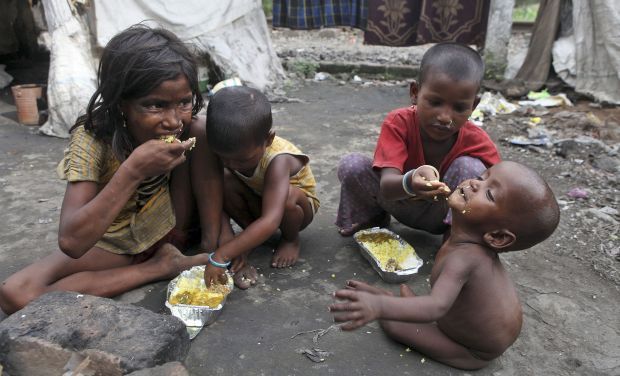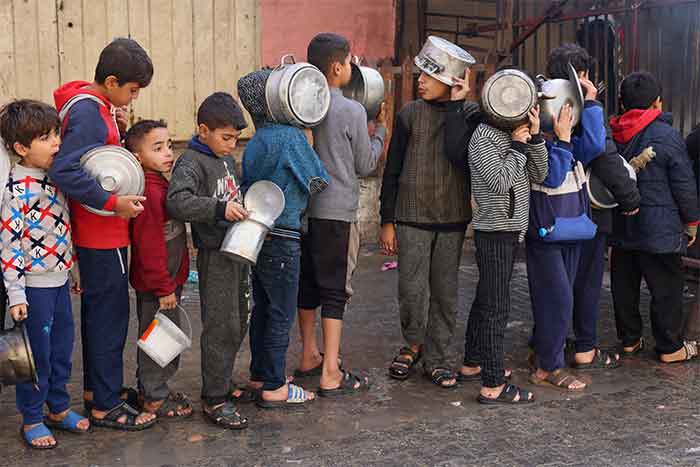Co-Written by Ruchi Sachan & Aditya Bordalai

“Hunger is not an issue of charity. It is an issue of justice”- Jacques Diouf, Former Director General of FAO
Goal 2 of the Sustainable Development Goals (SDGs) seeks to end hunger and all forms of malnutrition by the year 2030. “Every year, around 9 million people die of hunger; that’s more than the death toll of AIDS, malaria and tuberculosis combined” (United Nations). The FAO has stated that over 800 million people remain chronically undernourished. One fourth of these, i.e. approximately 200 million are from India. In the recently released Global Hunger Index, India was placed 102 among 117 surveyed countries. Niti Aayog, policy think tank of the Government of India goes on to elucidate that “as many as 25 States and Union Territories fail to address hunger and malnutrition adequately”. It can be clearly seen that the growth benefits have not reached every strata of society. As reported by the Observer Research Foundation, almost 15% of the country’s total population falls in the ‘hungry’ bracket, making India one of the most undernourished regions in the world. Both children and adults suffer from significant levels of malnutrition, the figures for which are alarming.
Dealing with the catastrophic situation head on, India has put in place several mechanisms. India implements one of the largest food security measures in the world, namely the National Food Security Act, 2013, which covers about 67% of the population, addressing the availability, accessibility and affordability aspects of food security. The National programme of Mid-May Meal in schools, which has been lauded globally, provides nutritious meals to children in schools. Antyodaya Anna Yojana (AAY) and Integrated Child Development Services (ICDS) are some of the other government actions which are working towards substantially improving the food and nutrition security in the country. Policy and programme interventions have met with some success, which is reflected in the several signs that indicate the progress in the food security scenario; however, the vulnerable population still faces immense challenges in accessing a balanced diet.
The burdensome state of affairs is accentuated by the COVID-19 pandemic, which is having a direct and detrimental impact on achievement of the Sustainable Development Goals. The ongoing crisis due to the pandemic, apart from being a health catastrophe, is also raising several pertinent socio-economic questions. The hardships have increased with the economic ecosystem being severely impacted, further aggravating the menace of hunger. Under such a scenario, achieving the targets of SDG-2 becomes a much more onerous task. Many people, especially in the informal sector, have lost their source of livelihood. It is to be noted that 90% of India’s workforce is employed in the informal sector (ILO), working as rickshaw pullers, street vendors, garbage collectors, domestic help, etc. Such informal nature of jobs mean that they do not have the privileges of a formal job such as access to pensions, paid leave, sick leave, etc. thus mostly relying on daily earnings for their subsistence. Women and men, from rural hinterlands, when they could no longer make their ends meet, were compelled to migrate to cities and towns in search of opportunities. Now with the spread of the pandemic and non-availability of any kind of work, this floating population is forced to return back to their homes with little or no savings to depend upon. It does not take much to understand that in such circumstances, the poor faces the dual challenge of keeping themselves safe from the virus, as well as to make arrangements for their daily sustenance. Many migrant labourers, small entrepreneurs and daily-wage workers throughout the country share a similar fear that hunger may kill them sooner than the virus itself. The choice between hunger and safety is not an easy one for the vulnerable who do not have the privilege of staying indoors during the nation-wide lockdown.
The challenge for the government is huge as this is one of the biggest predicament of recent times. Nevertheless, Government of India’s economic stimulus package of 20 lakh crore comes as a welcome relief. Additionally, many state governments have announced cash transfers for daily-wage earners affected by the lockdown. Moreover, there are community kitchens being actively run by the government as well as several NGOs. However, this is just one step in meeting the food needs of the vulnerable population. There is a further need to boost up the social protection programmes while keeping the domestic supply chain moving. Ensuring food security in terms of accessibility and availability of food would also help in controlling community transmission as it would stop people from moving from one city to another. Further India would require a comprehensive approach along with effective implementation of its initiatives to metamorphose the plans into the desired outcome. This calls for coming together of the government, civil society and judicial framework to address the challenges of hunger and malnutrition. A display of shared sense of responsibility needs to be the urge of the hour.
Countries and regions across the world would need to cooperate with one another to prevent the derailment of the SDGs. Even the UN has warned that without global cooperation and proper financial mechanisms in place “the number of people dying from hunger or hunger-related diseases could double this year due to the economic fallout of the coronavirus pandemic”. It would further lead to an increase in number of people living below the poverty line. It is also for this reason that the global food trade must be in constant flow. Significant assistance is needed especially for the developing regions. An emphasis also needs to be put on the availability of reliable, updated data, which helps in efficient tracking.
There are seventeen SDGs and they are all interconnected. However, the fate of SDG 2 (zero hunger: to end hunger and achieve food security with improved nutrition) in these times is critical. Achieving the goal of zero hunger along with sustainable agriculture, is pertinent to the achievement of the other SDGs, for it helps in fostering economic growth and combating climate change, along with contributing to peace and stability in societies around the world. Building resilience and capacity against disasters would play a substantial role in the global fight against hunger as food insecurity is exacerbated by critical situations. Thus, an integrated and inclusive approach is pivotal for making headway in tackling this indirect, yet imminent, impact of the pandemic.
Ruchi Sachan is an Assistant Professor at Miranda House, University of Delhi and she has completed her PhD from Jawaharlal Nehru University, New Delhi in International Relations. ([email protected])
Aditya Bordalai is a Doctoral Scholar in the Centre for South Asian Studies at Jawaharlal Nehru University. ([email protected])
SIGN UP FOR COUNTERCURRENTS DAILY NEWS LETTER















































